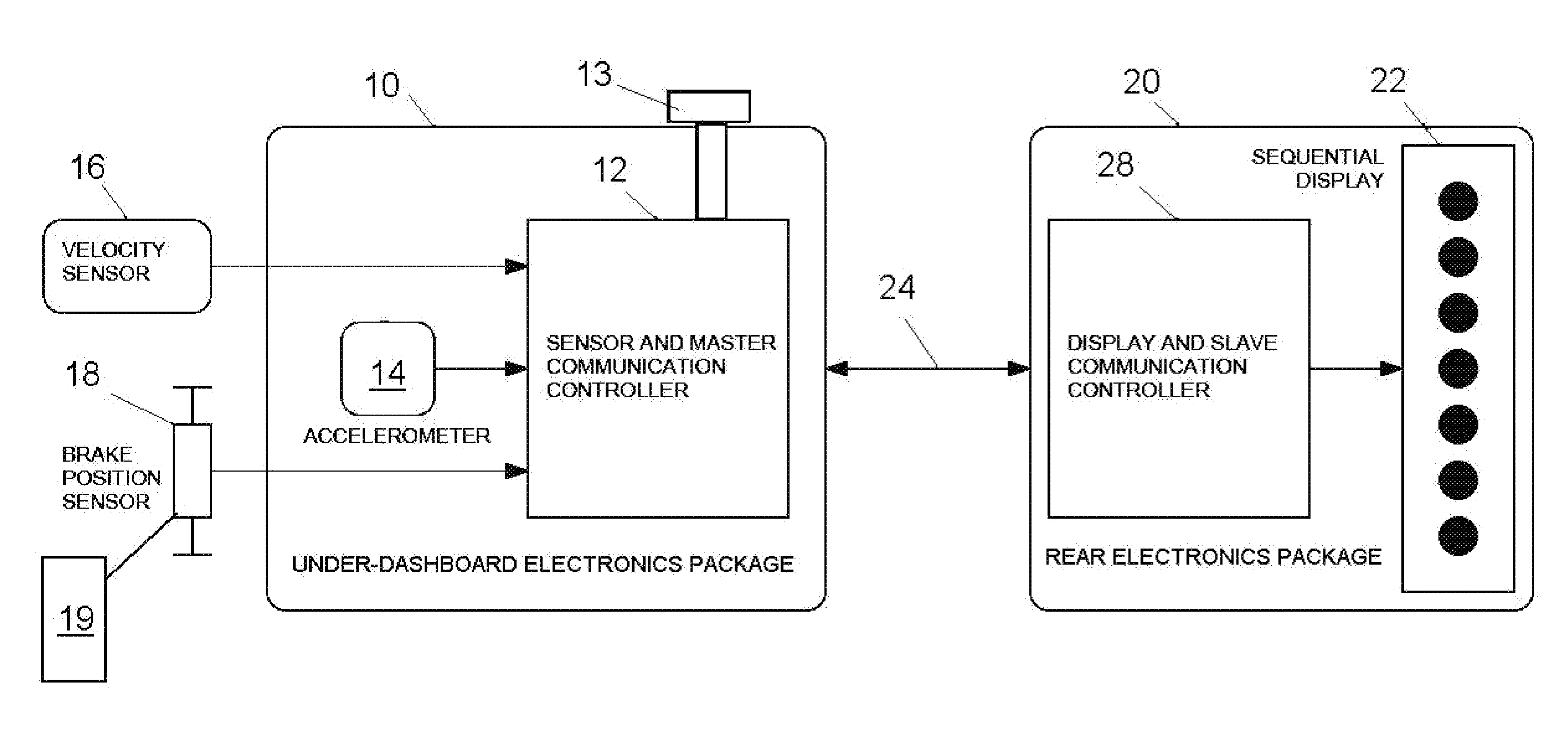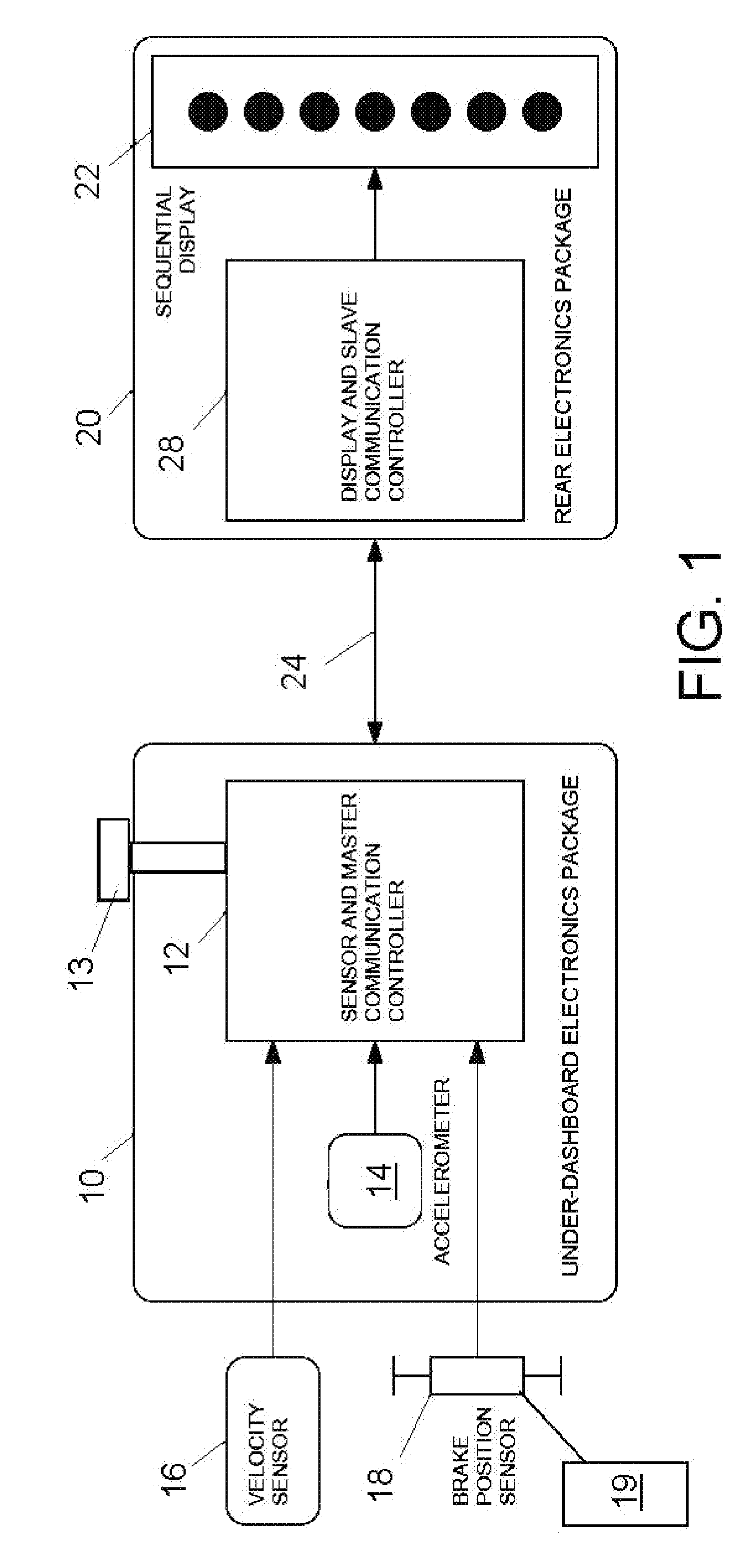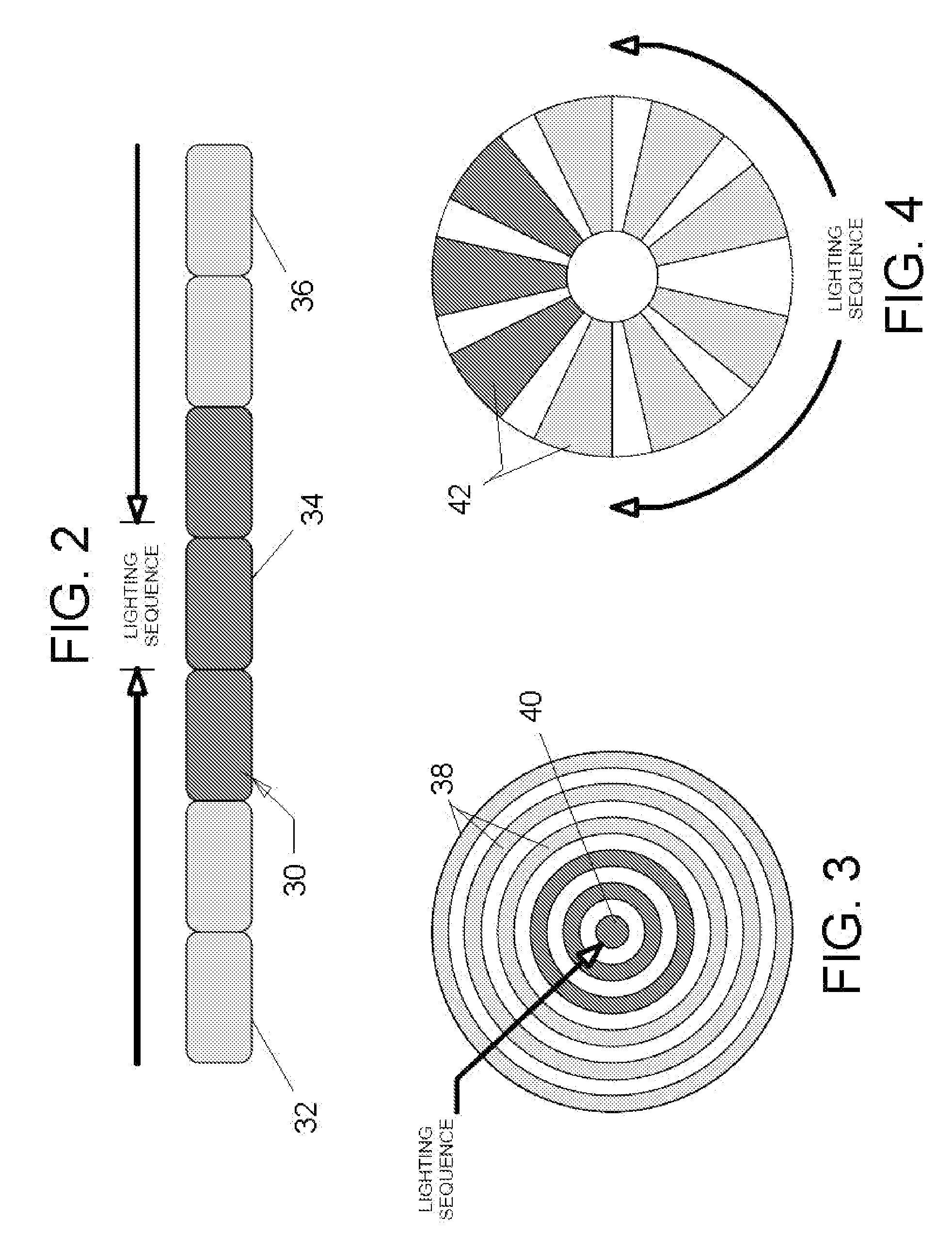Sequential brake light system
a brake light and sequence technology, applied in the field of sequential brake light systems, can solve the problems of insufficient time required to correlate and assess this information, collision between vehicles, and driving too serious to be based on one's decision, so as to reduce the number of these types of accidents
- Summary
- Abstract
- Description
- Claims
- Application Information
AI Technical Summary
Benefits of technology
Problems solved by technology
Method used
Image
Examples
Embodiment Construction
[0026]Referring now to the drawings, FIG. 1 illustrates a sequential brake light system of the invention for automotive or other road vehicles. The system comprises a speed or velocity sensing mechanism or device 16, that is wires to, or is independent of the speedometer that is provided on all road-legal, road vehicles. For vehicles having a compatible speedometer, the existing speedometer of the vehicle can be wired to the system and the speed sensor 16.
[0027]The system of the intention includes a third brake light array 22, made up of a plurality of individual red lights in a series such as a linear series of lights 30, 32 and 34 in FIG. 2, or concentric lights 38 and 40 in FIG. 3, or radial lights 42 that are circumferentially distributed around a circle in FIG. 4. The array 22 is mounted on or behind the rear window or near either or both tail lights of the road vehicle, or at any location on the vehicle, so that the array 22 is visible to the driver of a trailing vehicle on th...
PUM
 Login to View More
Login to View More Abstract
Description
Claims
Application Information
 Login to View More
Login to View More - R&D
- Intellectual Property
- Life Sciences
- Materials
- Tech Scout
- Unparalleled Data Quality
- Higher Quality Content
- 60% Fewer Hallucinations
Browse by: Latest US Patents, China's latest patents, Technical Efficacy Thesaurus, Application Domain, Technology Topic, Popular Technical Reports.
© 2025 PatSnap. All rights reserved.Legal|Privacy policy|Modern Slavery Act Transparency Statement|Sitemap|About US| Contact US: help@patsnap.com



